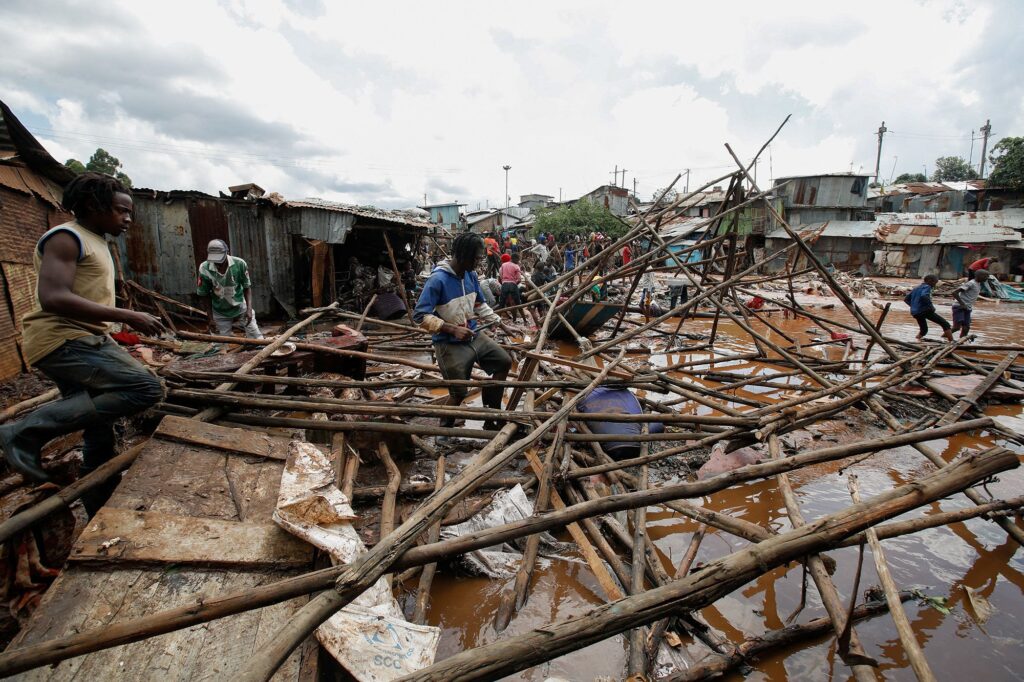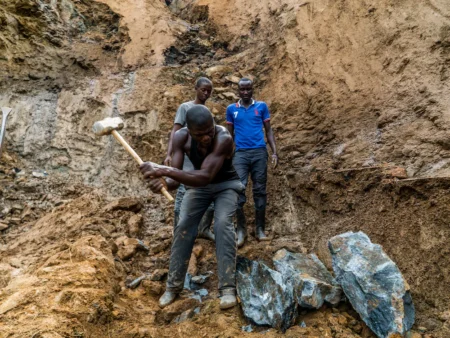- Torrential rains have caused terrible floods in Kenya, causing the death toll to reach more than 200, and more than 280,000 people affected.
- Over the years, both governments in Kenya and Tanzania have struggled to finance disaster management systems.
- Tanzania’s commercial pulse, Dar es Salaam’s economy, and infrastructure suffer from frequent and severe flooding, and the situation will worsen without major interventions.
“Tomorrow I am turning 24, and in 2030, I will be 30; seeing all these situations (floods) puts me in a scary position for my future,” Jeffrey Mboya, a Kenyan climate activist, told CNN International correspondent Larry Madowo, as flooding destroys his community.
Lost lives, destructed communities, stranded tourists, broken bridges, and closed-off roads are currently becoming the new normal in Kenya and Tanzania as the two neighboring nations experience floods and cyclones.
Torrential rains have caused terrible floods in Kenya, causing the death toll to reach more than 200, more than 280,000 people affected, thousands left homeless, and nearly 2,000 schools destroyed, according to the World Health Organization (WHO).
Flooding in Kenya’s Tana River County escalated the threat of Cholera, with 44 reported cases highlighting concerns about the spread of waterborne diseases.
The situation is getting worse, as Kenya’s Ministry of Health medical epidemiologists say the disaster triggered the closure of 14 health facilities and a shortage of major water treatment plants, forcing 3000 people to have a water shortage.
In Tanzania, more than 155 people lost their lives, schools were shut down, and coastal region communities faced displacement.
Further, a 396-kilometer highway connecting Dar es Salaam’s port city and Lindi and Mtwara’s southern regions (cashew-producing basket) was shut down on Sunday after flash floods swept off at least four main bridges.
Read Also: Kenya, Tanzania braces for torrential floods as Cyclone Hidaya approaches
Intervention to combat floods in Kenya and Tanzania
Throughout the years, both governments in Kenya and Tanzania have struggled to finance disaster management systems.
However, the government of Kenya wants the National Assembly to approve $76 million to cater for emergency response on account of the flooding situation in the country caused by the ongoing heavy rains as the humanitarian state deteriorates. The funds will be spread across recurrent and development expenditures.
On the other hand, Kenyan President William Ruto promised emergency financial assistance to every household affected by and displaced by floods in Nairobi.
According to information from AfricaNews, during a visit to the affected areas in the Capital’s dense informal settlements, Ruto pledged to give each family 10,000 Shillings (75 USD) and vowed to rebuild all schools destroyed by floods.
“The government has set aside 1 billion Kenyan Shillings (7.5 million USD) to rebuild all the schools affected by floods, before re-opening,” he told the crowd.
President Ruto postponed the planned reopening of schools earlier this week, as heavy rains and floods that have killed more than 200 people continue. On the same line, the Kenyan President tied his speech with a beacon of hope for the victims.
He further explained how his flagship ‘Affordable Housing’ project will go on to end such flooding-related displacements in the future.
“I will announce the construction of 20,000 houses that will help people of Nairobi living in informal settlements like this one,” he said.
Across the border, his counterpart, Tanzanian President Samia Suluhu Hassan, ordered authorities to respond in areas affected by tropical cyclone Hidaya, Prime Minister Kassim Majaliwa said on Monday.
Flooding derail progress
Available figures show that between 2010 and 2020, adverse climate change-related events (including flooding) led to annual socioeconomic losses of 3 to 5 percent of total gross domestic product (GDP).
The current flooding events could exacerbate the stress and limitations impoverished people face daily due to climate change-related economic challenges.
Tanzania’s commercial pulse, Dar es Salaam’s economy, and infrastructure suffer from frequent and severe flooding, and the situation will worsen without major interventions.
According to a report by the World Bank, which funded Tanzania disaster management projects, in May of 2019, uninterrupted rainfall caused serious flooding in Dar es Salaam; 1,215 households were displaced, roads and bridges were destroyed, and 1,560 dwellings were swept away.
Further, the WB report noted that Dar es Salaam was affected by similar incidents in 2009, 2010, 2011, 2014, and 2015, and seven floods alone impacted the city between 2017 and 2018.
These events are a constant reminder of the urgency to address urban flood risk, which causes major disruption to mobility, basic daily routines such as getting to work or school, and, worse, the diseases that dirty flood waters bring to affected communities.
“The April 2018 flood cost the population an equivalent of 2 and 4 percent of the city’s GDP or between US$107-227 million in losses. On average, affected households lost 23 percent of their annual expenditure. This equates to 84 days of a typical household’s expenditure. However, the results of the vulnerability assessment are somewhat surprising. Poorer people were not the ones who lost the most in relation to their income. One explanation is that poor households have fewer assets to lose and are less likely to undertake housing repairs, resulting in a lower monetary value of losses.” The World Bank report commented in part.
Tanzania, which joined the class of low-middle-income nations, continually faces severe disaster impacts that hurt progress in its least developed regions, bread baskets, and mineral deposits, feeding multinational conglomerates resources.
Kenya is one of Africa’s nations facing harsh realities due to climate change and is noted to be one of the most climate-vulnerable regions in the world.
“Kenya is facing a worsening flood crisis due to the combined effects of El Niño and the ongoing March-May 2024 long rains,” International Federation of Red Cross and Red Crescent Societies (IFRC) CEO Jagan Chapagain said in a post on X earlier this week, referring to the climate pattern that originates in the Pacific Ocean along the equator and impacts weather all over the world.
“The unfolding devastation highlights the government’s obligation to prepare for and promptly respond to the foreseeable impacts of climate change and natural disasters,” said Nyagoah Tut Pur, Africa researcher at Human Rights Watch, in a statement Thursday. “Kenyan authorities should urgently support affected communities and protect populations facing high risk.”
Read Also: COP28 failures: Climate change undermines Africa’s food security
Overwhelmed systems
Rescuing is ongoing but with rather crude methods and technologies, as some rescues use their bare hands. The Kenyan military supervises search and recovery operations, but they are overwhelmed by the task.
“We are doing the rescue with our bare hands…the machines before they get here have to go through a process, some have no fuel, it is very challenging,” says Joseph Gitau, a rescue worker in Mai Mahiu, Kenya.
Runda, one of Kenya’s wealthiest communities, was not spared from the devastating impacts of the flooding.
If not addressed promptly, Kenya’s Health Principal Secretary, Mary Muthoni, issued a stark warning about the looming crisis posed by waterborne diseases. Alongside health officials, she distributed water purification supplies in Nairobi, emphasizing the dual threat of contaminated water sources and foodborne illnesses exacerbated by the floods.
The WHO reaffirmed its commitment to supporting the government’s emergency response efforts, underscoring the importance of swift containment to prevent the escalation of disease outbreaks. To bolster these efforts, the WHO has procured cholera, inter-agency, and pneumonia kits for distribution to key counties, with the capacity to treat approximately 10,000 individuals.
According to figures published by Statista, about 1.7 thousand natural disasters in Africa were reported between 1970 and 2019, causing economic losses of around $38.5 billion US Floods and storms had the highest economic impact.











